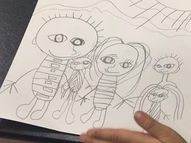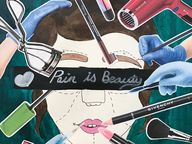Important steps In Designing UnitsStep 1: Determine & Unpack Standards
Step 2: Group Standards into Units Step 3: Identify Enduring Understandings tied to standards Step 4: Decide Themes to frame the unit Step 5: Design Essential Questions within the Unit Theme Step 6: Create Unit Performance Assessment to Assess Priority Standards Step 7: Write Lessons that Build Skills to the Assessment - Inquiry-based Lesson Design - What is Inquiry? - Inquiry-based Lesson Tips - Teaching through Inquiry in Art - Inquiry-based Lesson Design - Inquiry-based Lesson Structure |
What does it mean to teach through inquiry in a contemporary art curriculum?
|
Structure of Sample Learning Plan in Art
Elementary UNITsComing Soon...
Middle School UNITSComing Soon...
High School UNITSComing Soon...
|
Engage: 1. Exploring/Discussing Professional Art/Artists Activity 1.1: VTS (Visual Thinking Strategy) Conversation Activity 1.2: Observations, Connections, and Guided Discussions/Inquiries Explore: 2. Exploring the Big Idea Activity 2.1: Mind Mapping and Brainstorming Activity 2.2: Media Experiments Explain: 3. Workshops Activity 3.1: Technical skills/Concept building #1 Activity 3.2: Technical skills/Concept building #2 Activity 3.3: Technical skills/Concept building #3 Activity 3.4: Technical skills/Concept building #4 Expand: 4. Project Planning for Independent artwork Activity 4.1: Plan Activity 4.2: Investigate 5. Create Independent Artwork Activity 5.1: Creation of Artwork Activity 5.2: Classroom Critique Activity 5.3: Revisions & Finalizing Extend: 6. Reflection & Documentation Activity 6.1: Write reflections on the artistic process, write artist statement rough drafts Activity 6.2: Photographing the artistic process 7. Interact with Authentic Audiences Activity 7.1: Presentation of Art Work & Artist Statement Activity 7.2: Respond to the Work of Others (VTS, Critiques, etc.) |


